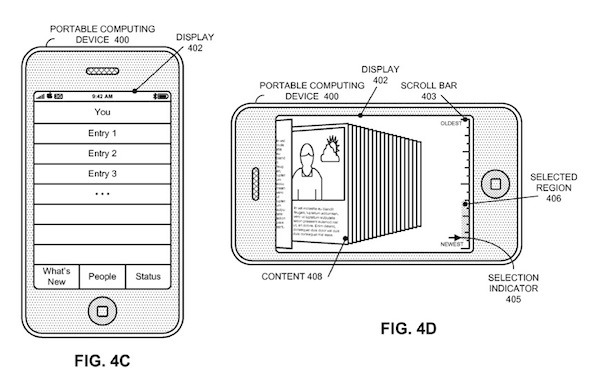
This week in the Intridea Insider, meet Thadd Selden, our Project Manager and Scrum Master.
Thadd's experience in Project Management is rooted in years of working on government contracts at companies like Raytheon. He studied Math and Physics and minored in Astrophysics and French in college, but his career in programming was initiated when he was recruited by a Navy research lab after his sophomore year at Randolph-Macon College in Ashland, VA. "They took me on for the summer and that's where I learned to program. Their philosophy was that it was easier to teach physicists coding than the other way around; so I spent my first two weeks (while waiting for my security clearance to come in before I could even log on to the system) reading C and FORTRAN books."
Thadd worked as a civilian scientist for the research lab while teaching himself different programming languages. "Most of my job was doing code archaeology on ancient algorithms written by a guy who retired a few years earlier." He was migrating the codebase from FORTRAN to C, and later to C++; "I offered to do a trial of it in C++ to see how it worked and everyone got on board." And because he was working on a classified system, "We couldn't download anything to it; so if we needed a tool, we had to write it." So he wrote things like calendar programs and chat clients. "Everything was usually written in nasty combinations of shell scripts, Motif, etc. I even wrote a whole to-do application in awk. We used to build GUI apps in Matlab even if they had nothing to do with our algorithms, just because that was the only easy UI toolkit we had."
Even now, Thadd still writes his own tools when he needs to. For example, he's been using a combination of Pivotal Tracker and Unfuddle at Intridea and made a way to import tickets from one to the other: "We like Unfuddle, but when we need to prioritize tasks against each other, we have to use Pivotal. So I wrote a little script that lets us import our Unfuddle tickets into Pivotal, which makes things a lot easier."
Although he was learning a lot at the research lab, Thadd battled with personal conflicts between being a pacifist and working on a nuclear weapons program. "I actually remember the exact moment that things changed for me: I was building a simulator that loaded terrain data from massive data files and I needed to know if I had north/south setup properly. So the solution was to load up New York in the simulator and go based on the buildings that were recognizable. It hit me when I realized I had just run a targeting sim, and there on my screen, were the Twin Towers."
That pivotal moment got Thadd working on his resumé. He got a call from Raytheon to go work on their unmanned vehicle programs, which weighed less on his conscience; "That was easier for me since it was all surveillance and they had some peace-time uses too." Not only was Thadd writing the control software for the vehicles that the pilots on the ground used, but he also was part of a startup R&D team at Raytheon that was charged with doing accelerated development and proofs of concept for new ideas and technologies.
I actually remember the exact moment that things changed for me: I was building a simulator that loaded terrain data from massive data files and I needed to know if I had north/south setup properly. So the solution was to load up New York in the simulator and go based on the buildings that were recognizable. It hit me when I realized I had just run a targeting sim, and there on my screen, were the Twin Towers.
As one of the tech leads on those projects, he began to get into agile development and processes. "Since Raytheon was a big company and did mostly government contracts, we had to have formal process; but we quickly realized that the traditional waterfall process wouldn't work for our team or our products. So we spent a lot of time working on developing agile process definitions and educating management and other teams on our lessons learned." Surprisingly, the government was on board with the agile development; it was Raytheon that he fought to convince: "They were so used to seeing the exact metrics and charts that they were used to, that trying to convince them that a project was on track with other data was a huge headache."
Thadd, now a certified Scrum master, is our agile evangelist. He discovered Intridea when he found himself in dire need of a company that would allow him to work remotely. "My wife is a college professor, and when she started a new tenure-track position here in Wilkes-Barre we had to relocate." Raytheon allowed Thadd to work remotely for a while, but eventually it became too hard to be the only remote worker on the team. Since most of our development team is distributed Thadd jumped at the opportunity to join us.

Thadd has been spending most of his time at Intridea leading a team of developers on a huge project for a gaming website, written in Ruby on Rails. He taught himself RoR when it first came onto the scene. "I was deep into the enterprise-y stuff when RoR came out, and PHP just didn't fit well for bigger projects at the time. I liked the idea of using model-view-controller for web development." He started building some small personal projects in RoR, and even used it a little bit at Raytheon; "There is now a RoR server running onboard an unmanned airplane." Although Thadd has used many different programming languages over the years, he loves Ruby the most; "I love that literally everything is an object. Other object-oriented languages half-ass it, but the fact that you can say 4.times in Ruby kicks ass."
One of our Senior Engineers, Joe Grossberg, asks Thadd how he keeps his programming skills so sharp now that he's a PM and Scrum guru: "I have to know my way around the code really well because I'm always doing deployments and configuration. Also, I have to know how the code is structured so I can process all the bugs and features requests from the client." In addition, sometimes he will code up small features or fix small bugs himself if it's easier than pulling a dev off a task. "This project is so big and complicated, especially with all the various stakeholders. But the Intridea developers are so great that they make my job easy."

Thadd loves programming, but his computer hobby began with hardware when a family friend introduced him to BBSes and AOL when he was in middle school. He learned how to build and fix computers, and even tinkered with Linux early in college. "I bought a domain name and set up a simple box in the Society of Physics student's lounge." As a teenager he was mostly interested in discovering how he could use software as a means to an end, like using lighting software in high school plays, as the Tech Director. "My Mom was a graphic artist and my step-father was a published expert on Postscript and Photoshop. So I was involved in the desktop publishing side of things too for awhile in high school." He credits his early experience with desktop publishing for giving him a "more critical eye for usability."
These days, Thadd works exclusively on Macs but he still tinkers with Linux from time to time. When Thadd isn't working, he makes time to enjoy sailing; "My main passion is sailing. I grew up spending a lot of time around boats and I still love it." He says that the lack of good sailing in Wilkes-Barre is problematic, but he keeps himself busy with hiking, reading Sci-Fi, practicing Kung Fu, and hanging out with his wife and their three dogs and four cats.

What does Thadd love most about working for Intridea? "Working on a challenging project and leading a talented team of developers. It's also great to be able to work out on my deck, which I get to do whenever the weather is nice." During the winter, he hibernates in his office down in the basement, which gives him the opportunity to "build a nice warm fire." It's a different life from the pressure of writing software for unmanned vehicles and nuclear weapons simulations. And different is good.
This post is part of a weekly series, called "Intridea Insider"


 According to an ABI Research report, one billion people will have 4G cellular coverage by 2012. That's compared to the just under 500M people who had coverage by year end 2009. [Via
According to an ABI Research report, one billion people will have 4G cellular coverage by 2012. That's compared to the just under 500M people who had coverage by year end 2009. [Via  Even if you have no interest in Apple's new iPad tablet computer, you probably can't get away from news about it, so you probably already know that it's pretty hard to get your hands on one, even in the United States. International availability will be done in phases, and it seems the date keeps getting pushed forwards, making a longer wait. But if you're not sold on the iPad, there'll be a number of competitors offering similar devices, and probably fairly quickly.
Even if you have no interest in Apple's new iPad tablet computer, you probably can't get away from news about it, so you probably already know that it's pretty hard to get your hands on one, even in the United States. International availability will be done in phases, and it seems the date keeps getting pushed forwards, making a longer wait. But if you're not sold on the iPad, there'll be a number of competitors offering similar devices, and probably fairly quickly.





